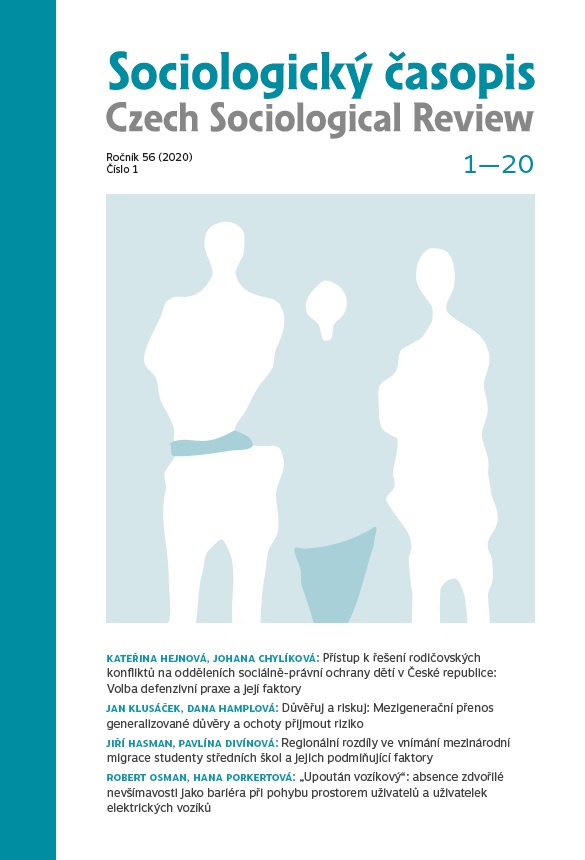„Upoután vozíkový“: absence zdvořilé nevšímavosti jako bariéra při pohybu prostorem uživatelů a uživatelek elektrických vozíků
‘Tied to a Wheelchair’: How the Absence of Civil Inattention Serves as a Spatial Barrier to Electric Wheelchair Users
Author(s): Robert Osman, Hana PorkertováSubject(s): Social differentiation, Health and medicine and law, Social Norms / Social Control
Published by: AV ČR - Akademie věd České republiky - Sociologický ústav
Keywords: disability geography; social space; Henri Lefebvre; civil inattention; wheelchair users
Summary/Abstract: The article is based on disability geography and draws on the social-geographic conception of relational space, which is perceived as being constantly created, never finished, heterogeneous, and embodied, and not a space that is given and everywhere the same. It offers a specific way of linking the discursive and material dimensions of disability, which intersect in the concept of social space, and refers to Lefebvre’s trialectics of production – spatial practices, the representation of space, and spaces of representations. To analyse the mutual production of social space and social bodies, we use Goffman’s concept of civil inattention. We ask how such social practices as gazing, addressing, asking, or dodging that co-create the social space of electric wheelchair users influence their movement through material space, and through the spatial reactions of wheelchair users responding to unwanted attention we trace the homogenisation and differentiation of space. The text is based on a long-term study (2010–2018) of the temporal/spatial behaviour of five electric wheelchair users (four men and one woman) diagnosed with muscular dystrophy who live in the City of Brno.
Journal: Sociologický časopis / Czech Sociological Review
- Issue Year: 56/2020
- Issue No: 1
- Page Range: 85-107
- Page Count: 23
- Language: Czech

